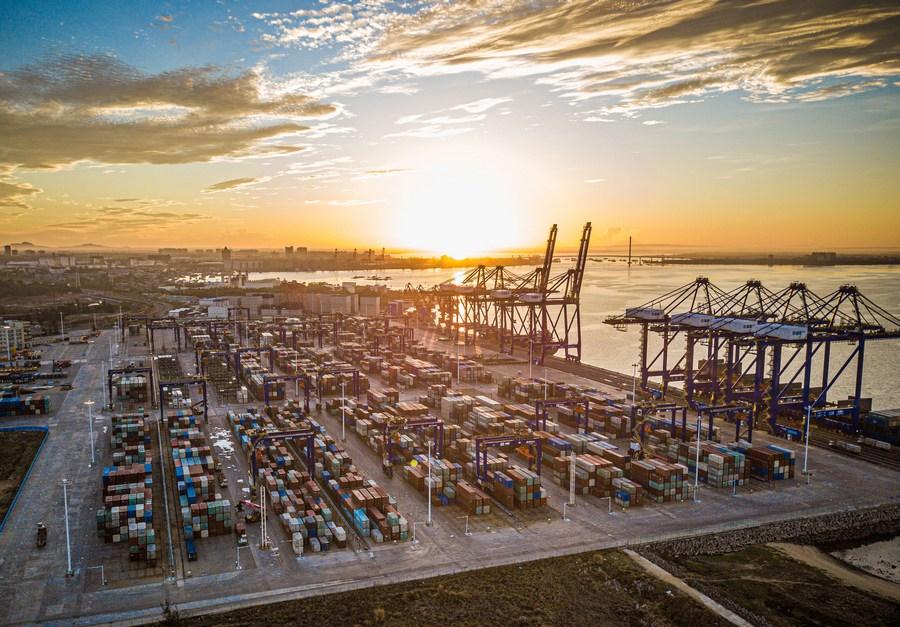BEIJING, April 22 (Xinhua) -- As some Western media jump to talk about the "big blow" China's dynamic zero-COVID policy has dealt to the economy, they neglect one of its biggest characteristics -- its resilience.
Naturally, all anti-epidemic measures come at a price, and there has been short-term downward pressure on the Chinese economy. But it would be shortsighted to believe that this will cripple the growth of the world's second largest economy.
First of all, China has been careful to monitor the duration and scope of all anti-epidemic measures, and the vast majority of its people are still enjoying a normal life, free from the woes of the epidemic.
Moreover, we can be certain that the financial hub of Shanghai will rebound from anti-epidemic measures, and this is also true for the rest of the nation.
China has over two years of experience as well as a track record that speaks for itself in coordinating epidemic prevention and economic development.
Second, with better-than-expected growth in the first quarter, China's economy is off to a steady start this year. It exceeded market expectations with year-over-year growth of 4.8 percent, well above 4 percent in the previous quarter.
In the same period, China's total imports and exports of goods jumped by 10.7 percent year on year, while paid-in foreign direct investment (FDI) soared by 25.6 percent year on year.
This rock-steady start only goes to show that the momentum of China's sustained economic recovery remains unhinged. China continues to draw from its array of strong economic fundamentals such as its industrial supply chains and its colossal consumer market.
Thirdly, China has already rolled out a raft of supportive policies to counter the fallout of the COVID-19 resurgence.
The People's Bank of China, the central bank, announced a 0.25 percentage point cut of the reserve requirement ratio from April 25, injecting 530 billion yuan (about 82 billion U.S. dollars) of liquidity into the market.
The central bank, together with the State Administration of Foreign Exchange, this week jointly released 23 measures to help businesses affected by the latest COVID-19 resurgence to improve domestic economic circulation and facilitate exports.
In 2022, the 400 billion yuan inclusive re-lending fund that especially targets micro and small enterprises will continue to be used on a rolling basis, and the quota can be expanded if necessary.
Other supportive policies included setting a quota of 3.65 trillion yuan for local-government-issued special-purpose bonds to fund construction projects, 2.5 trillion yuan worth of tax and fee cuts in 2022, and front-loading the construction of major projects.
And last but not least, China is known for having an extensive policy toolkit it can use to stimulate the economy, such as the deep cash reserve held by commercial banks.
There is still plenty of room to adjust monetary and fiscal policies, including the injection of more liquidity and more tax and fee cuts.
Chinese Finance Minister Liu Kun said, in an article published on April 16, that the proactive fiscal policy will be front-loaded and fully implemented.
Policies need to be issued at the earliest possible date with funds allocated in a timely way to generate economic activities and stabilize the economy, Liu said in the article in the Qiushi Journal, a flagship magazine of the Communist Party of China Central Committee.
All in all, any impartial eye can see that China is poised to overcome the challenges that lie ahead, achieve sustained economic growth, and make further contributions to world economic recovery.




 A single purchase
A single purchase









